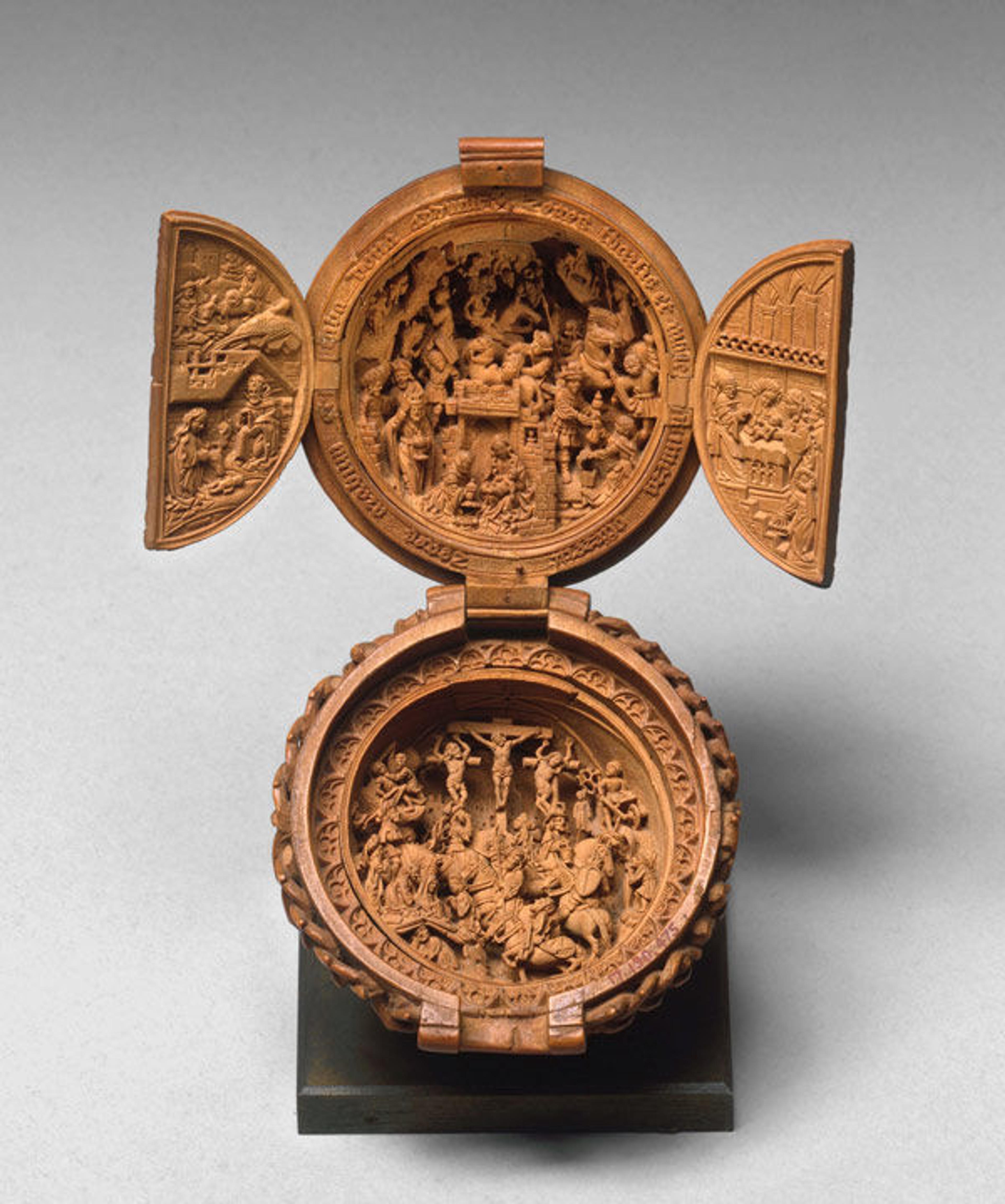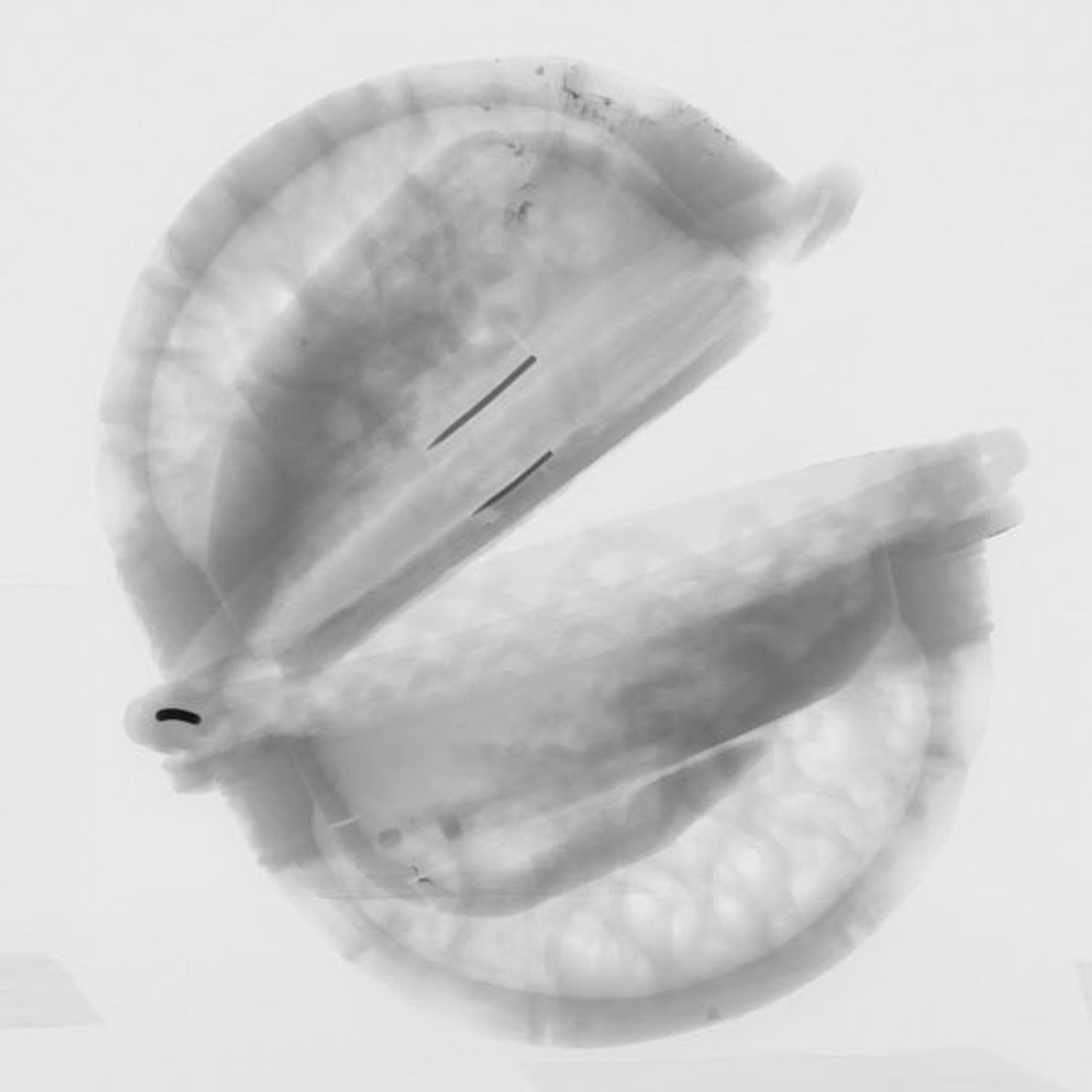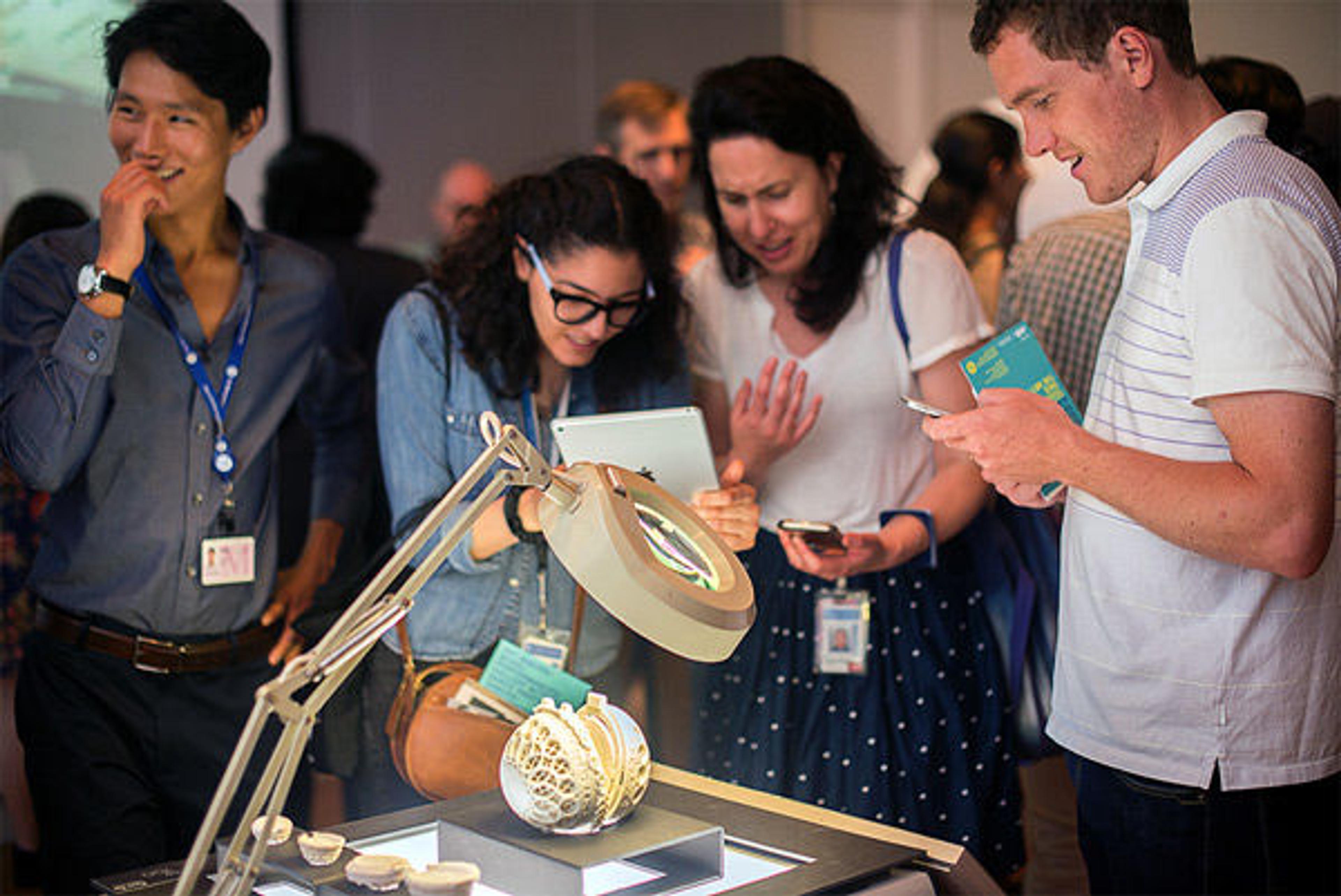A Tasty Take on Medieval Rosary Beads

Rosary bead (detail), 1500–1510. South Netherlandish. Boxwood; diam: 2 1/16 in. (5.2 cm). The Metropolitan Museum of Art, New York, Gift of J. Pierpont Morgan, 1917 (17.190.475)
«As part of his recent internship in the MediaLab, college student Kevin Yoo created Medieval Treasures and Chocolate Pleasures, an original, technology-driven project inspired by the Met's collection in which he 3D-printed medieval rosary beads in sugar and gypsum.»
During the early stages of his project, he searched high and low for an artwork on which to focus, but it wasn't until he found himself in Objects Conservator Pete Dandridge's office that inspiration struck. On Pete's desk sat several sixteenth-century boxwood rosary beads he was studying in preparation for an upcoming 2017 exhibition at The Cloisters that will also travel to the Art Gallery of Ontario and the Rijksmuseum. Kevin was immediately drawn to the beads' beauty and sculptural qualities.
With extreme care, Pete unclasped one of the beads to reveal intricate carvings of Adam and Eve and the crucifixion of Jesus hidden inside. He then opened up the Adam and Eve carving to reveal a triptych of scenes from the life of Christ. The level of detail was remarkable for a bead that is less than two and a half inches in diameter.

View of the triptych of scenes from the life of Christ inside the rosary bead
Barbara Drake Boehm, Paul and Jill Ruddock Curator, later explained the bead's historical origins and religious significance to Kevin. Equipped with a deeper appreciation of the bead, Kevin then began to explore how he could use technology to connect the medieval world to today's visitors.

A CT scan of the medieval rosary bead, which was later converted into the data necessary for 3D printing. Image courtesy of Kevin Yoo
Kevin worked with 3D Systems to figure out the combination of colors, scents, and flavors he would use for his 3D-printed sugar rosary bead. Kevin felt a frankincense-scented, wine-flavored bead might be the closest respresentation of a medieval church, but he could also create an abstract version of the bead using fantastical combinations of patterns and flavor.

Views of Kevin's 3D-printed sugar rosary bead. Photographs by Kevin Yoo
As an industrial design major at Pratt Institute, Kevin has a lot of experience in 3D printing with plastic, but using sugar presented a new challenge. When 3D Systems printed the bead with a diameter of two and a half inches (slightly larger than lifesize), their machine failed to render the minute details of the original clearly. To solve this problem, Kevin wanted to print a bead with an eight-inch diameter, but at that size it would become structurally unsound and collapse, even if he added gum or other binders to the sugar.

The 3D-printed gypsum rosary bead, on display at the spring 2015 Met MediaLab Expo. Photograph by Thomas Ling
For the spring 2015 MediaLab Expo, Kevin decided to showcase two of the smaller, less-detailed sugar rosary beads and a larger gypsum rosary bead, which, although inedible, simulates the potential he sees in 3D printing with sugar.
Kevin hopes that in the future, 3D printing with sugar will be able not only to replicate the details of the boxwood rosary bead but surpass them by restoring details lost through centuries of wear. His ultimate goal is for people to be able to use all five senses to appreciate rare artworks that they can currently admire only from a distance.

Visitors viewing Kevin's 3D-printed rosary beads in sugar and gypsum, on display at the spring 2015 MediaLab Expo. Photograph by Thomas Ling
Hannah Holden
Hannah Holden is a guest blogger for In Season. She is a freelance arts and culture writer.